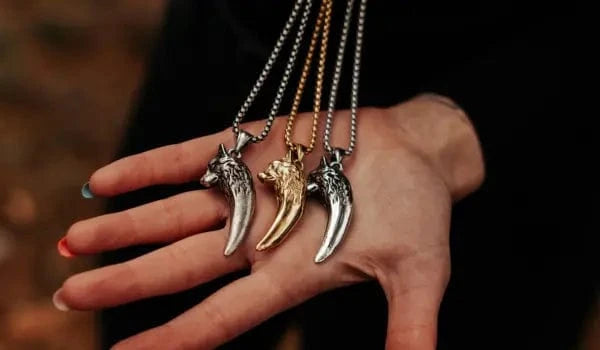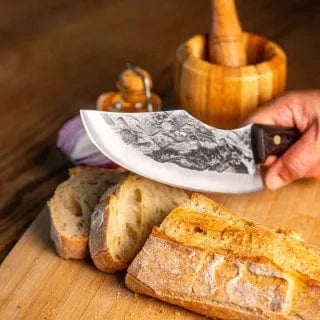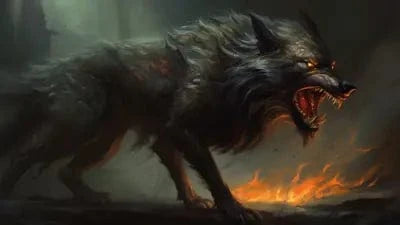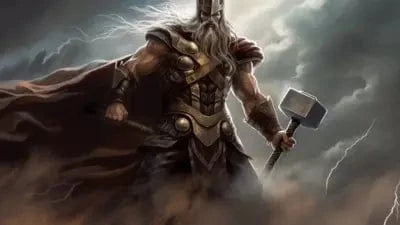Runic alphabets were the first written signs created by the Germanic people and later used by the Scandinavians. The runes of the ancient Futhark (runic alphabet) also have an important place in Norse mythology. The runes had the function of letters and were used to write in several Germanic languages. However, the meaning of the runes in the ancient Futhark was much deeper than the letters we know today. Each rune was a symbol of a cosmic force. Therefore, writing a rune letter meant invoking the power that the written rune symbolised. According to tradition, runes were engraved on hard natural materials such as stone, wood or metal. This is why the runes had an angular and pointed shape.

The Viking Runes given by Odin
According to Norse Mythology, runes are a very powerful source of power discovered by Odin during a legendary sacrifice. It was after this that he would then give men the Futhark, which would become the Viking runic alphabet.
An alphabet of great powers
According to Norse myth, the runes were discovered by Odin himself. And he didn't just find them in a book somewhere, no, he had to die for them, he had to hang himself from a branch for nine days and nights so that we could have the power and wisdom of this sacred alphabet in our hands.
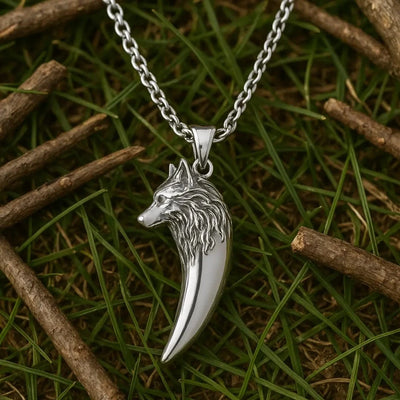
34,90€
50,00€
In contrast to ordinary alphabets such as Latin or cuneiform, the runic alphabet is more than just a representation of letters. Each rune is a symbol that represents a power or cosmological principle. In other words, when you write a rune, you are directly addressing the universe and the gods and evoking their power. In other words, their power is such that they can rewrite your own destiny.
The sacrifice of Odin
Great power is born of great sacrifice, and that is precisely what Odin understood. He wanted a way to harness the power of the Norns, the three sisters who control our fate. And so he thought that the only way to have such power was to make a great offering himself. He hung himself from the world tree Yggdrasil, pierced his body with his spear and looked into the dark waters of the well of Urd. In this state between the living and the dead, the dreamer and the awakened, the runes revealed themselves to him.
With the knowledge of the runes, Odin now had the tools to project his will into existence. Myth tells us that he was able to protect himself and his friends in battle, heal disease and injury, unlock restraints and raise the dead. There is no limit to what runes can do, they are the "code" of the universe, and with the proper knowledge, Odin learned to "reprogram" the cosmos to his own will.
Birth of the Futhark
And then he passed this knowledge on to us. For you see, words create reality and shape perception, with the help of runes, humans can manipulate the world around them to fulfill their internal or external desires. For example, the first rune Fehu represents luck, abundance, financial strength. It is a sign of hope, happiness and foresight. When you carry this rune with you, you carry its inherent meaning, which in turn resonates in your mind and in the universe. The sight of it reminds you of what you want and helps you to focus that will on the cosmos. At the same time, it 'speaks' directly to the universe in its own language, letting it know what you want from it.
In his story, Odin also gave us the secret of "activating" the runes. His state between the living and the dead can be seen as a metaphor for a phenomenon called the hypnagogic state, most common when you wake up in the middle of the night and are neither asleep nor awake. In this state you are open to the universe, just as Odin was, and if you look at the runes, their meaning and essence will sink into you 'activating' their power to rewrite your destiny. So the next time you wake up in the middle of the night, stare at the rune whose power you want to gain and discover the magic of the Vikings brand.
We invite you to discover the youtube channel "Initiations to the Runes" to know everything.
Viking Runes in History
The word "rune" in German means "letter" and "secret". And it is precisely for this reason that its original meaning is thought to have been: 'a silent message'. The earliest discovered runic inscriptions date from around 150 AD. In Viking times, the Scandinavians used these runic symbols. However, with the spread of Christianity, the runes were replaced by the Latin alphabet. While the Vikings may have disappeared, their spirit did not, for in Northern Europe runes were used for decorative purposes until the early 20th century!
It's even coming back into vogue in many parts of the world in our time!
The runic alphabets used by the Nordic people are also called "futharks". This name comes from the first six runes (Fehu, Uruz, Thurisaz, Ansuz, Raidho, Kaunan).
The three most famous runic letters are distinguished:
- 1. The Ancient Futhark (consisting of 24 characters and used from 150 to 800 AD),
- 2. The Anglo-Saxon Futhorc (consisting of 33 characters and used from 400 to 1100 AD),
- 3. The Young Futhark (consisting of 16 characters and used from 800 to 1100 AD).
The Runes of the Elder Futhark
The Elder Futhark is the oldest runic alphabet used by the Vikings. It consists of 24 unique runic symbols, each with its own meaning. The runes in this letter are grouped in three rows. This means that there are eight symbols in each row. It was believed that a God and Goddess ruled over each order (a group of runes).
So the first group was ruled by Freyr and Freyja, the fertility deities. The second group was led by Heimdall, and the leader of the third group of runes was Tyr. To date, just under 400 runic inscriptions have been found using the letters of the Elder Futhark. However, most are partially or entirely illegible due to the wear and tear of time.
Runes are thought to have been used in magical rituals (invoking powerful forces) long before they began to be used for writing. As mentioned at the beginning of the article, each rune letter symbolised a specific power. An interesting fact is that the invocation of a rune was not necessarily synonymous with success. Runes, which were not symmetrical in shape, could be inverted and invoke a force opposite to the one they symbolised.
Let's take a look at the meaning of the Ancient Futhark runes (normal and reversed).
1.FEHU (PRONOUNCEMENT: FEY-WHO)
Symbolizes: Domestic animals and wealth.
Fehu (rune "f") is interpreted as prosperity, happiness and financial gain. Fehu is also a sign of hope and abundance. If the Fehu rune is reversed, it means disappointment or a bad decision. A reversed Fehu rune essentially means personal failure.
2.URUZ (PRONOUNCEMENT: OO-ROOZE)
Symbolizes: physical, spiritual and emotional strength, wild ox, an unexpected change for the better, and health.
Uruz (rune "u") symbolizes wild strength, indomitability and power (like that of a wild ox). This rune also signifies the courage to overcome all obstacles in life. If the Uruz rune were reversed, it would be an indication of weakness, misdirection of strength, brutality and violence towards others.
3.THURISAZ (PRONOUNCEMENT: THOO-REE-SAHZ)
Symbolizes: Caution, a protective attitude, and the God Thor.
The Thurisaz (rune "þ") symbolizes thorns on branches. Therefore, its meaning is oriented towards precautionary measures (protection). This rune is a kind of warning of possible enemy ambushes. If the rune Thurisaz is reversed, it signifies danger, evil, betrayal and helplessness.
4. ANSUZ (PRONOUNCEMENT: AHN -SOOZE)
Symbolizes: Good communication, prophecies, wisdom.
The Ansuz ("a") rune indicates signs that indirectly lead to making the right decisions. If the Ansuz rune is reversed, it can mean deception by the God Odin or misunderstanding and illusion.
5. RAIDHO (PRONOUCIATION: RYE-THOUGH)
Symbolizes: Physical and spiritual journeys, change, rest, the big picture.
The rune Raidho ("r") has multiple meanings. It means always adapting and being ready to change. Some interpretations refer to finding old friends. If reversed, the Raidho rune means possible stagnation and delay. Similarly, a reversed Raidho rune is a sign that a Viking must reconsider his behaviour and analyse his mistakes.
6. KENAZ (PRONOUNCEMENT: KANE- AWZE)
Symbolizes: torch, fire, beacon.
Kenaz (rune "k") represents light and is believed to have the power to drive out darkness. It opens the door to creativity and signifies progress and personal development. When the Kenanz rune is reversed, it brings instability and lack of inspiration.
7. GEBO (PRONOUNCEMENT: GAY-BOH)
Symbolizes: Self-sacrifice, gifts, generosity, unity, forgiveness.
The Gebo rune ("g") symbolizes a mutual connection between two people and can also mean self-sacrifice. It is about maintaining balance in relationships, whether professional, friendly or romantic. The Gebo rune cannot be reversed.
.
8. WUNJO (PRONOUNCEMENT: WOON-YO)
Symbolizes: Satisfaction, euphoria and joy.
Wunjo (rune "w") primarily symbolizes joy. According to the Wunjo runes, anyone whose thoughts are pessimistic attracts negative energy. Conversely, positive thoughts always bring positive energy. When the Wunjo rune is reversed, it is believed that a bad, unhappy period of life is to come.
9. HAGALAZ (PRONOUNCEMENT: HAW-GAW-LAWZ)
Symbolizes: the destructive and uncontrolled forces and wrath of nature.
The Hagalaz rune (rune "h") means negative energy and force that cannot be controlled. Diseases and natural disasters are examples of uncontrolled forces that do not depend on human will. The Hagalaz rune cannot be reversed.
10. NAUTHIZ (PRONOUNCEMENT: NOW-THESE)
Symbolizes: Need and stagnation.
The rune Nauthiz ("n") marks the beginning of troubles that prevent the realization of plans. In order to overcome these troubles, the most important thing to do is to face your fears. It is also necessary to make as many changes as possible in one's life (e.g. change of job). If reversed, the Nauthiz rune signifies restriction of freedom, poverty and hunger.
11. ISA (PRONOUNCEMENT: EEE-SAH)
Symbolizes: Ice and winter.
The rune Isa ("i") symbolizes frozen water (ice), which usually means a delay or postponement of plans. The rune Isa has the characteristic of reinforcing the effect of the runes surrounding it. This rune cannot be reversed either.
12. JERA (PRONOUNCEMENT: YAIR-AH)
Symbolizes: a good harvest, natural cycles and movement through time.
The rune Jera ("j") represents the benefit of the efforts invested (i.e. the crops sown, as they can finally be harvested). The effort and work invested in the harvest is finally rewarded, and it is time to move on to a peaceful and happy period of life. The Jera rune cannot be reversed.
13. EHWAZ (PRONOUNCEMENT: AY-WAHZ OR EEE-WAHZ)
Symbolizes: Life and death, renewal and yew.
Ehwaz ("ï" (æ) rune) does not mean death in the true sense of the word. It indicates that everything is renewed and reborn. The Ehwaz rune also symbolises a yew tree. The yew tree is considered the tree of life because of its long life span. The Ehwaz rune does not have a reverse meaning.
14. PERTHRO (PRONOUNCEMENT: THROWING PEAR)
Symbolizes: A secret, a mystery, and hidden things waiting to be discovered.
The rune Perthro ("p") suggests that there are still mysteries unknown to humans. It is crucial to carefully follow the signs that the Universe sends us and to trust one's intuition. An inverted Perthro rune indicates that an unwanted secret may be revealed.
15. ALGIZ (PRONOUNCEMENT: AL-GEEZ)
Symbolizes: Instinct and protection of your home or sanctuary.
The rune Algiz ("z") provides protection against different types of threats. With this rune, it is possible to guide cosmic forces in a positive direction, preventing the action of negative forces. The rune Algiz reversed represents a warning or hidden danger.
16. SOWILO (PRONOUNCEMENT: SO-WEE-LOH)
Symbolizes: health, sunlight, vitality and good energy.
Sowilo (rune "s") represents solar energy and is considered the energy that drives the world. The energy of the Sun helps to achieve goals and indicates positive changes in life. The Sowilo rune cannot be reversed.
17. TIWAZ (PRONOUNCEMENT: TEE-WAHZ)
Symbolizes: victory, courage, and the Norse god Tyr.
The rune Tiwaz ("t") symbolizes a warrior, due to its spear-like shape. It also represents the willingness to sacrifice oneself to achieve greater goals. This rune is also a symbol of the Norse god Tyr. If reversed, the Tiwaz rune signifies a lack of motivation as well as a fear of failure.
18. BERKANA (PRONOUNCEMENT: BEAR-KAH-NAH)
Symbolizes: birth, new beginnings, family and loved ones, and the birch tree.
Berkana (rune "b") symbolizes the cycle of life. This rune is also a symbol of the birch tree that blooms first in spring. This is considered a sign of birth (sometimes pregnancy) and a new beginning. If reversed, the Berkana rune signifies stagnation and a slower achievement of life goals.
19. EHWAZ (PRONOUNCEMENT: AY-WAHZ)
Symbolizes: partnership, loyalty, the horse, teamwork, progress and movement.
The Ehwaz rune (rune "e") symbolises friendship, solidarity and teamwork. When these three elements work perfectly, every goal is easily achievable. Even if the Ehwaz rune is reversed, it does not necessarily have a negative meaning. A reversed Ehwaz rune can simply mean the need for a change (for example, a change in lifestyle).
20. MANNAZ (PRONOUNCEMENT: MAHN-AWZ)
Symbolizes: Humanity and self-awareness.
The Mannaz rune (rune "m") represents everything that makes a person: spirit, reasoning ability, traditions, customs, etc. The Mannaz rune essentially reminds us that all people in the world have something in common despite their differences. If reversed, the Mannaz rune can signify the onset of depression and the need for isolation from others.
21. LAGUZ (PRONOUNCEMENT: LAH-GOOZE)
Symbolizes: Water currents, intuition and purification.
The Laguz ("l" rune) represents all forms of water elements present on Earth (water surfaces in nature, but also water in the human body). The Laguz symbolises intuition and suggests that a person should follow their instincts at all times. If reversed, the Laguz rune signifies a dead end and a lack of creativity.
22. INGWAZ (PRONOUNCEMENT: ING-OOZE)
Symbolizes: male sexuality, inner growth and ideal timing.
Inguz (rune "ŋ") is a positive rune, primarily signifying happiness and fertility. Whether it is a business, creative project or other, the Inguz rune attracts the energy needed to accomplish it. The Inguz rune cannot be reversed.
23. DAGAZ (PRONOUNCEMENT: DAH-GAZ)
Symbolizes: radical change and self-transformation.
The Dagaz rune (rune "d") is also called the "dawn rune" and symbolizes hope and emergence from darkness. Metaphorically speaking, the Dagaz rune affirms that with a strong will, any goal can be achieved (even darkness can be turned into light). The Dagaz rune has no reverse meaning.
24. OTHILA (PRONOUNCEMENT: OWE-THA-LA)
Symbolizes: Ancestral spiritual power and love between family members.
The Othila ("o") rune indicates the importance of the connection with the ancestors and the spiritual heritage. The Othila rune also signifies the importance of family support in all life decisions. The reversed Othila rune symbolises bad family relationships.

A Viking Alphabet and Symbols
Strong Viking symbols are numerous, and their alphabet makes no difference, for by itself the Futhark is a Viking symbol in its own right. We have finished presenting the different meanings of the Viking runes and we hope that everything was clear and limpid for you.
We invite you to get on your drakkar and continue browsing our website, to discover our other articles dealing with Norse mythology, but also our Viking jewellery that will testify to your love for Scandinavian history.
Get in your drakkar and browse our site:
